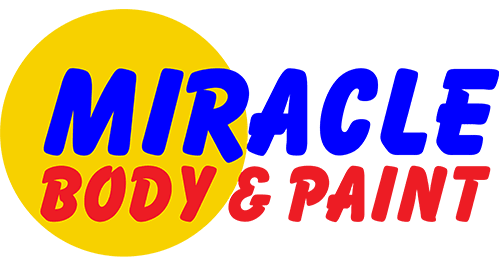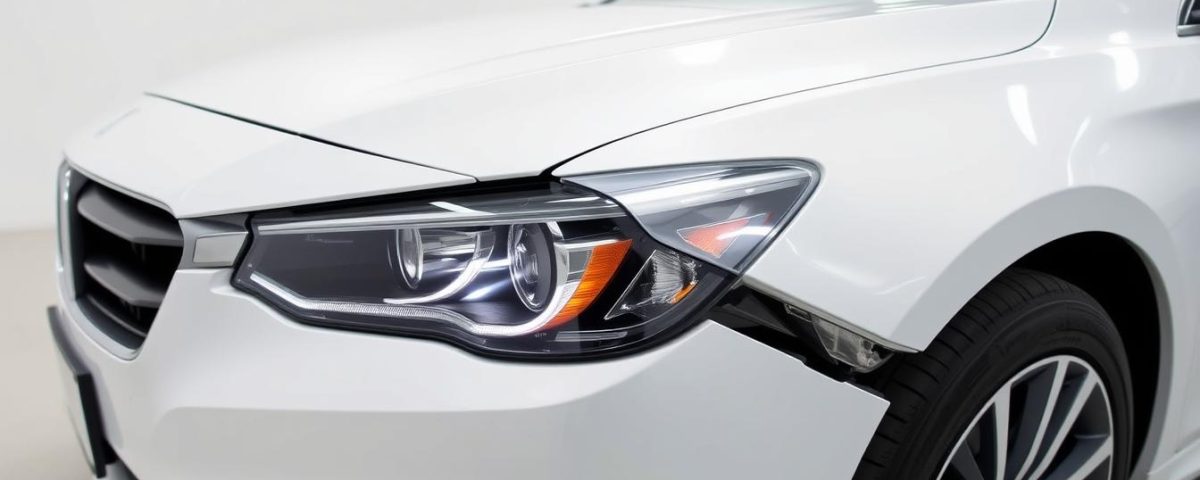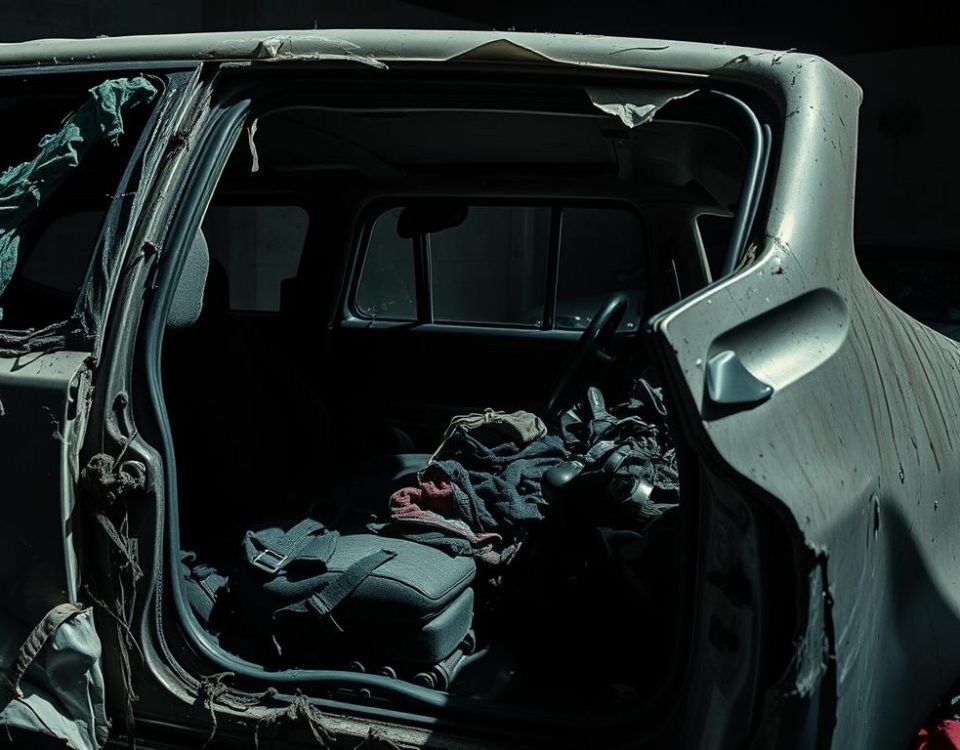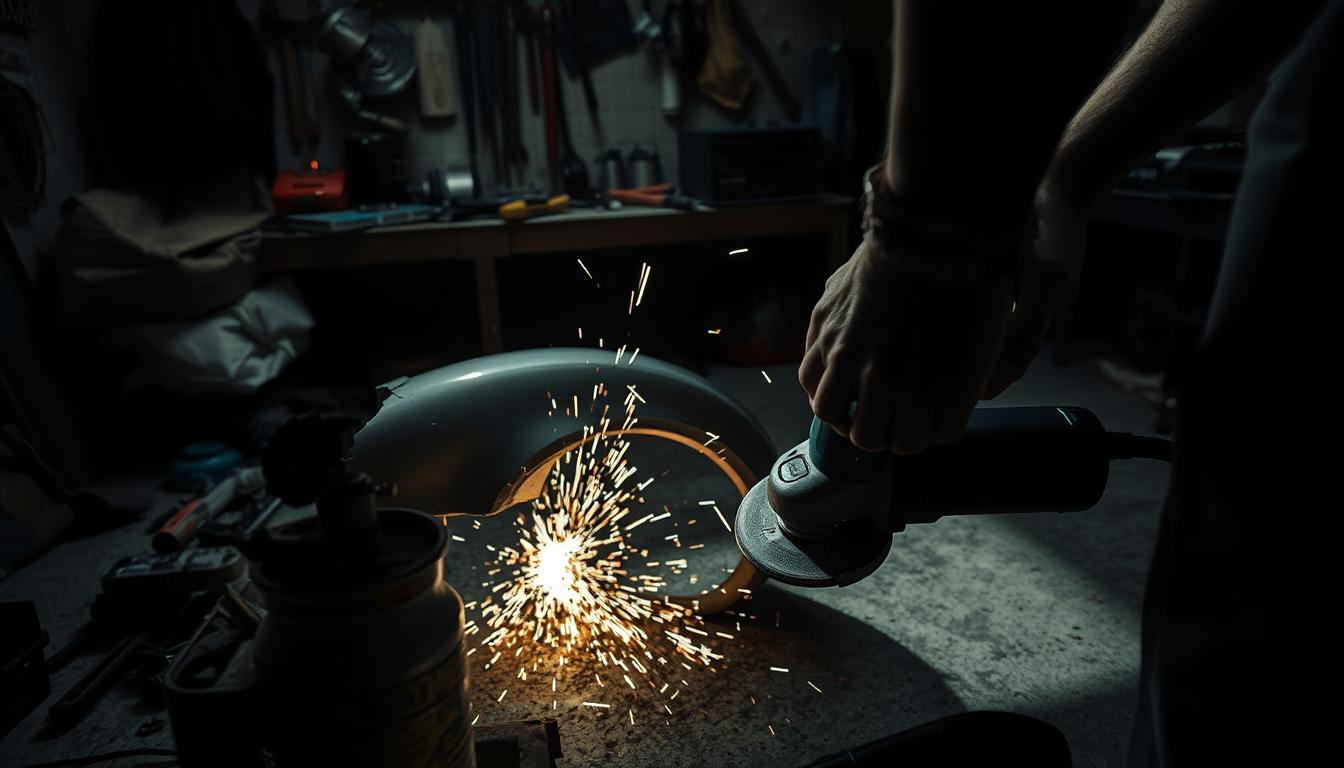
Is DIY Auto Body Repair a Good Idea?
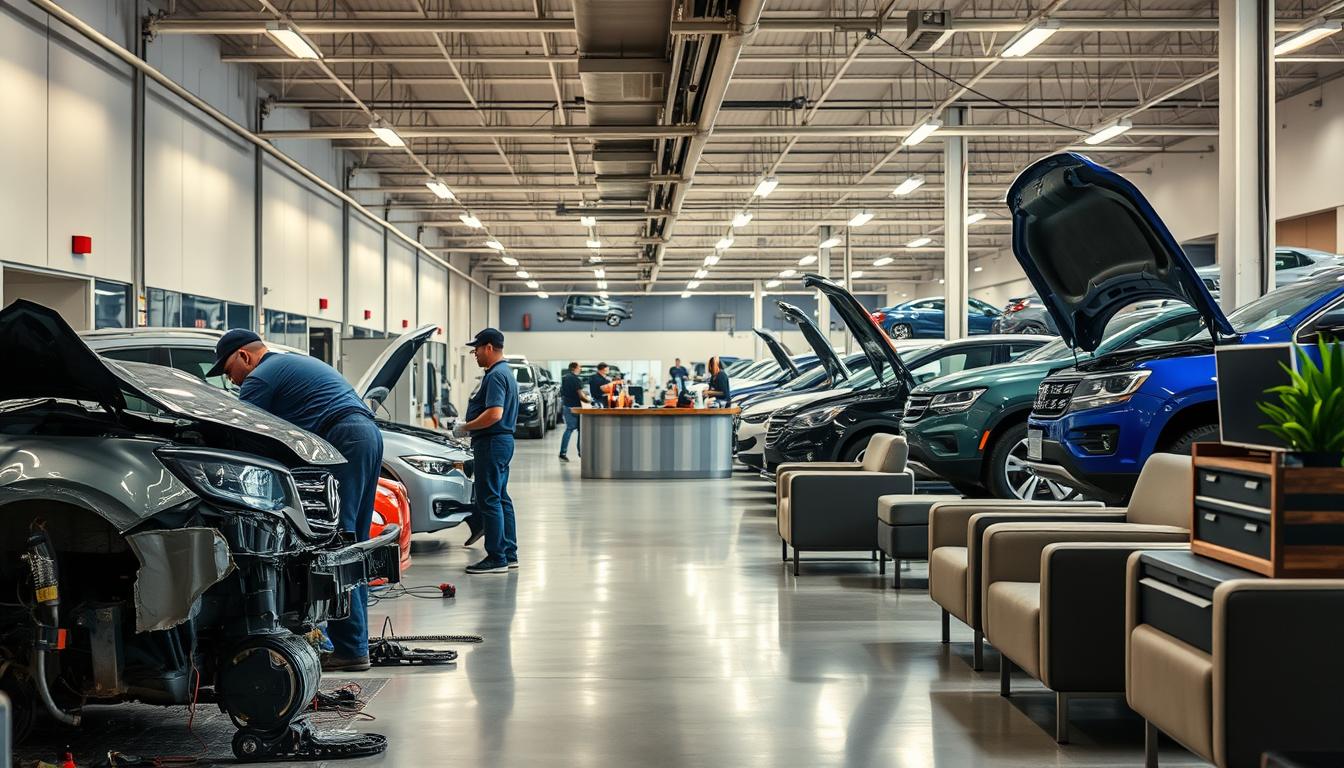
How to Choose the Right Collision Center for Your Vehicle
Being in a collision can be a stressful and traumatic experience. After filing a report with a collision center, one of the many decisions you’ll face is whether to replace your vehicle or have it repaired.
It’s natural to have concerns about driving your car after it’s been repaired, despite its shiny new appearance. The question remains: is your vehicle truly safe to drive?
Choosing a reliable collision repair service like Miracle Body and Paint, with locations in San Antonio, is crucial to ensuring your vehicle’s vehicle safety after repairs.
Key Takeaways
- Collision repair can be a complex process.
- Vehicle safety is a top concern after repairs.
- Choosing a reliable collision repair service is crucial.
- Miracle Body and Paint is a trusted collision repair provider.
- Proper repairs ensure your vehicle’s safety on the road.
Understanding Collision Repair Basics
To ensure your vehicle is safe to drive after a collision, it’s essential to understand what the collision repair process entails. The integrity of the repair work directly impacts your safety on the road.
Researching the auto body repair shop before handing over your vehicle is crucial. Ensure that the technicians working on your car have special training in collision repair. This not only ensures that the repairs are done correctly but also that your vehicle is restored to a safe condition.
What Happens During Collision Repair?
During a collision repair, technicians assess the damage to your vehicle and create a plan to restore it to its original condition. This process involves repairing or replacing damaged parts, including bodywork, mechanical components, and electrical systems.
Types of Collision Repairs
There are several types of collision repairs, ranging from minor repairs such as fixing a dented fender, to major repairs that involve rebuilding the vehicle’s frame. Understanding the type of repair your vehicle needs is crucial for ensuring that the work is done correctly.
Common Materials Used in Repairs
The materials used in collision repair can vary depending on the type of damage and the make of the vehicle. Common materials include steel for structural repairs, aluminum for certain body parts, and advanced composites for some modern vehicles. The choice of material is critical for maintaining the vehicle’s safety and performance.
By understanding the basics of collision repair, vehicle owners can better appreciate the importance of having their car repaired by certified technicians using the right materials and techniques.
The Importance of Certified Technicians
When it comes to ensuring the safety and quality of collision repairs, the expertise of the technician is paramount. The importance of certified technicians in collision repair cannot be overstated, as they directly impact the vehicle’s safety and performance. A certified technician brings a level of trust and reliability to the repair process, giving vehicle owners peace of mind.
Certified technicians undergo rigorous training and testing, equipping them with the knowledge and skills necessary to perform high-quality repairs. This training is crucial in maintaining the vehicle’s integrity and ensuring it is safe to operate post-repair.
Why Certification Matters
Certification matters because it signifies that a technician has met specific standards set by reputable organizations such as I-CAR or ASE. These organizations provide comprehensive training programs that cover the latest repair techniques and technologies. By choosing a certified technician, vehicle owners can be confident that their vehicle is in capable hands.
I-CAR and ASE certifications are particularly noteworthy as they are recognized industry-wide for their stringent requirements. Technicians with these certifications have demonstrated a commitment to staying up-to-date with the latest developments in collision repair.
Recognizing Qualified Professionals
To recognize qualified professionals, look for technicians who have I-CAR or ASE certifications. These certifications are indicators of a technician’s expertise and dedication to their craft. Additionally, many repair shops proudly display their technicians’ certifications, making it easier for customers to verify their qualifications.
When selecting a repair shop, it’s essential to inquire about the qualifications of their technicians. Asking about certifications and training programs can provide valuable insights into the shop’s commitment to quality and safety. By choosing a shop with certified technicians, vehicle owners can trust that their vehicle will be repaired to the highest standards.
Assessing Vehicle Safety Post-Repair
Verifying your vehicle’s safety after collision repairs is a critical step that should not be overlooked. A post-collision repair inspection is crucial in ensuring your vehicle is fully restored to its pre-accident condition. While auto body repairs address visible damage, hidden structural or mechanical issues may remain unnoticed.
Visual Inspection Checklist
A thorough visual inspection is the first step in assessing your vehicle’s safety post-repair. Look for any signs of mismatched or poorly fitted parts, and check for any unevenness or irregularities in the vehicle’s body.
- Check all doors, windows, and trunk to ensure they open and close properly.
- Inspect the vehicle’s paint job for any inconsistencies or areas where the paint may be oversprayed onto other parts.
- Look for any signs of rust or corrosion, especially in areas around repairs.
Testing for Structural Integrity
Testing your vehicle’s structural integrity is crucial for ensuring it can withstand future impacts or stresses. This involves checking the vehicle’s alignment and ensuring that all safety features are functioning correctly.
- Take your vehicle for a test drive on different road types to check for any unusual vibrations or noises.
- Check the vehicle’s alignment by observing how it tracks on a straight road.
- Ensure all airbags and other safety features are operational.
The Role of Quality Parts in Safety
Quality parts play a pivotal role in maintaining vehicle safety following collision repairs. When a vehicle is involved in an accident, the repair process is crucial not only for restoring its appearance but, more importantly, for ensuring its structural integrity and safety on the road.
Aftermarket vs. OEM Parts
The choice between aftermarket and OEM (Original Equipment Manufacturer) parts is a critical decision in the repair process. OEM parts are made by the same manufacturer that produced the original parts, ensuring a precise fit and maintaining the vehicle’s original performance and safety standards. On the other hand, aftermarket parts, while often cheaper, may vary in quality and compatibility.
Aftermarket parts are manufactured by companies other than the original equipment manufacturer. While they can be more affordable, their quality can be inconsistent. Some aftermarket parts may not meet the original safety and performance standards, potentially compromising vehicle safety.
Importance of Genuine Components
Genuine components, or OEM parts, are designed to meet the manufacturer’s specifications, ensuring that the repair maintains the vehicle’s original safety and performance characteristics. Using OEM parts can enhance repair trust and contribute to overall vehicle safety.
Many top-of-the-line accident repair shops utilize high-tech equipment for precise frame measuring and locating replacement parts, thereby ensuring the vehicle’s structural and functional integrity is restored. The use of such technology, combined with quality parts, is crucial for achieving a safe and reliable repair.
In conclusion, the quality of parts used in collision repairs significantly impacts vehicle safety. Opting for OEM parts and working with repair shops that use advanced technology can ensure that your vehicle is restored to its original safety standards, thereby enhancing repair trust.
Advances in Repair Technologies
The integration of advanced technologies in collision repair has elevated the standards of vehicle safety and repair quality. Modern cars use advanced electronic systems that may be affected by a collision, and inspectors now perform diagnostic scans to identify any hidden malfunctions, error codes, or software issues related to repairs.
Innovations in Auto Repair
Recent innovations in auto repair have significantly improved the collision repair process. One of the key advancements is the use of advanced diagnostic equipment that can detect even the most subtle issues in a vehicle’s electronic systems. This ensures that all problems are addressed, not just those that are visible.
Another significant innovation is the development of specialized repair software that can recalibrate a vehicle’s complex systems after a repair. This software helps technicians to accurately adjust and test the various electronic components, ensuring that they function as intended.
How Technology Enhances Safety
Technology plays a crucial role in enhancing vehicle safety post-repair. By utilizing advanced diagnostic scans and repair software, technicians can ensure that a vehicle’s safety features are fully functional. This includes systems such as lane departure warning, blind spot detection, and automatic emergency braking.
- Diagnostic scans help identify hidden issues that could compromise safety.
- Specialized software ensures that complex electronic systems are properly recalibrated.
- Advanced repair technologies enhance the overall quality and reliability of the repair.
By embracing these technological advancements, collision repair shops can significantly enhance repair trust, providing customers with the assurance that their vehicle is safe to drive. This not only improves customer satisfaction but also contributes to overall road safety.
Understanding the Repair Guarantee
The repair guarantee is a critical aspect of collision repair that directly impacts your vehicle’s safety and reliability. When a repair shop offers a guarantee, it’s essentially a promise that the work will be done correctly and that your vehicle will be safe to drive.
A key component of this guarantee is the repair warranty, which is a formal assurance that the repairs will meet certain standards. Understanding what this warranty covers is essential for any vehicle owner.
What is a Repair Warranty?
A repair warranty is a commitment by the repair shop to stand behind the quality of their work. It typically covers both parts and labor, ensuring that if something goes wrong with the repair, it will be addressed without additional cost to you.
It’s crucial to understand the terms of your warranty, including its duration and what it covers. Some warranties may only be valid for a certain period, while others might offer lifetime coverage.
How to Validate Your Warranty
Validating your warranty involves several steps. First, ensure you have all the necessary documentation from the repair shop, including a detailed description of the work done and the warranty terms.
- Review the warranty document carefully to understand what is covered.
- Keep records of all correspondence with the repair shop regarding the warranty.
- If issues arise, contact the repair shop promptly to report them and initiate the warranty claim process.
Some insurance policies require verification that all necessary repairs were completed before finalizing a claim. If your vehicle is still under warranty, certain repairs must meet manufacturer specifications to keep coverage intact.

By understanding and validating your repair warranty, you can ensure that your vehicle remains safe and reliable, even after a collision. This not only protects your investment but also ensures your continued safety on the road.
Impact of Insurance Guidelines on Safety
Understanding insurance guidelines is essential for ensuring vehicle safety after a collision repair. Insurance companies have specific requirements that repair shops must follow to ensure that vehicles are restored to a safe operating condition.
Insurance Requirements for Repairs
Insurance guidelines dictate the standards for collision repair, influencing the quality of work and the parts used. Repair shops must adhere to these guidelines to ensure that vehicles are repaired to a safe standard. For instance, insurance companies often specify the use of Original Equipment Manufacturer (OEM) parts or parts that meet OEM standards to guarantee the vehicle’s safety and performance.
A collision repair that meets insurance requirements involves a thorough assessment of the damage and a detailed repair plan. This plan must be approved by the insurance company before work begins, ensuring that all necessary repairs are covered and that the vehicle meets safety standards.
Understanding Coverage Limits
It’s also crucial to understand the coverage limits of your insurance policy. Coverage limits determine the extent of the repairs that will be covered by the insurance company. If the cost of repairs exceeds these limits, the vehicle owner may be responsible for the additional costs.
To build repair trust, it’s essential to have a clear understanding of what is covered under your insurance policy. Reviewing your policy and asking questions can help clarify any doubts. Additionally, working with a repair shop that has experience with insurance claims can facilitate the process and ensure that your vehicle is repaired safely and efficiently.
Laws regarding damaged vehicles vary by state, but most states have regulations that prevent driving damaged cars if they represent a danger to passengers, other drivers, and pedestrians. Ensuring compliance with these regulations is a critical aspect of collision repair.
Importance of Post-Repair Inspections
Post-repair inspections play a vital role in maintaining vehicle safety. After a collision, the integrity of the repairs is crucial for preventing future accidents and ensuring the vehicle operates as intended.
The Need for Third-Party Inspections
While the repair shop may provide assurance that the work is done correctly, a third-party inspection can offer an unbiased evaluation. This independent assessment can help verify that all repairs meet industry standards, enhancing repair trust.
Third-party inspections can identify potential issues that might have been overlooked, providing an added layer of safety. They can also help in validating the quality of parts used and the workmanship.
Conducting a Thorough Post-Repair Check
To conduct a thorough post-repair check, start by visually inspecting the vehicle for any signs of improper repair, such as misaligned panels or uneven paintwork. Check that all safety features, like airbags and anti-lock braking systems (ABS), are functioning correctly.
- Verify that all repaired areas are structurally sound.
- Test the vehicle’s systems, including brakes, suspension, and steering.
- Check for any signs of leaks or other potential issues.
By taking these steps, vehicle owners can significantly enhance their vehicle safety and repair trust, ensuring their car is roadworthy and safe to drive.
Road Testing After Repairs
Before driving your vehicle after collision repair, conducting a road test is vital to check for any potential issues. This step is crucial in ensuring your vehicle is safe to drive and operates as expected.
How to Safely Test Your Vehicle
To safely test your vehicle, start by checking the surroundings to ensure it’s safe to move the vehicle. Then, slowly and carefully drive the vehicle, checking for any unusual noises, vibrations, or performance issues.
- Check the brakes for proper function.
- Test the steering for any unusual pulls or resistance.
- Ensure all lights and signals are working correctly.
Signs That Indicate Safe Operation
A safe vehicle operation is indicated by several key factors. These include:
- Smooth acceleration and braking.
- Proper alignment and stable steering.
- No unusual noises or vibrations.
If you notice any issues during the road test, it’s essential to have your vehicle re-inspected by a professional.
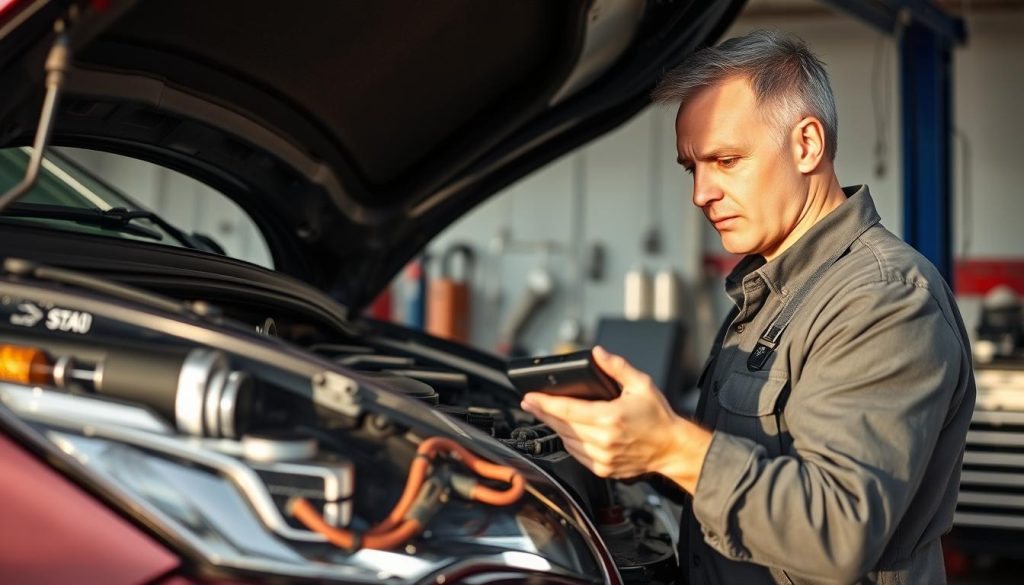
Customer Feedback and Safety Outcomes
Repair trust is built when customers share their experiences, helping others make informed decisions about their vehicle’s safety after collision repairs. Customer feedback plays a vital role in assessing the safety outcomes of these repairs.
Learning from Previous Experiences
By examining customer reviews and feedback, you can gain valuable insights into the reliability and competence of a repair shop. This information is crucial in determining whether your vehicle is in safe hands.
- Look for patterns in customer complaints or praises to understand the shop’s strengths and weaknesses.
- Check if the repair shop responds to customer feedback, showing their commitment to customer satisfaction.
- Pay attention to reviews that mention specific safety checks or procedures followed by the shop.
Using Reviews to Assess Repair Shops
Reviews can provide a wealth of information about a repair shop’s ability to ensure vehicle safety. When reading through reviews, look for mentions of:
- The professionalism and expertise of the technicians.
- The quality of parts used in the repairs.
- The shop’s adherence to safety protocols and procedures.
Properly repaired vehicles retain their value better than those with lingering damage or poor repair work. If you plan to sell or trade in your vehicle in the future, having documentation that verifies all post-accident repairs were completed correctly can increase buyer confidence, thereby enhancing repair trust.
By leveraging customer feedback and reviews, you can make a more informed decision about your vehicle’s safety after collision repairs. This not only ensures your safety on the road but also helps in maintaining the overall value of your vehicle.
Maintaining Vehicle Safety After Repairs
After a collision repair, ensuring your vehicle’s long-term safety is crucial. Regular maintenance plays a significant role in preserving the integrity of the repairs and overall vehicle safety.
Routine Checks
Regular inspections can help identify potential issues before they become major problems. Check your vehicle’s tires, brakes, and suspension regularly to ensure they are in good condition. This is particularly important after a collision repair, as these components may have been affected.
Ongoing Maintenance Resources
To maintain your vehicle’s safety, consult your owner’s manual or speak with a certified technician for guidance on routine maintenance. A well-maintained vehicle not only ensures your safety on the road but also retains its value in the resale market. For collision repair services, consider visiting Miracle Body and Paint, with two convenient locations in San Antonio, to get your vehicle back to its pre-accident condition.
By prioritizing vehicle safety and maintenance, you can enjoy a safe driving experience and protect your investment.

